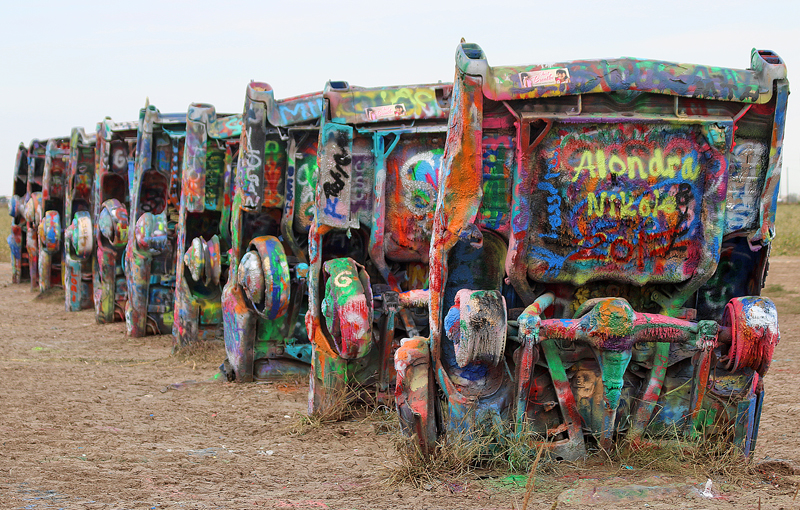As I drove eastbound along Interstate 40, I had no indication that I passed by an area which has literally become a roadside attraction, where ten different models of Cadillac automobiles — from 1949 through 1963 — are buried halfway into the ground, with the front half of each car below ground and the tail halves sticking up.
My Visit to Cadillac Ranch in Photographs
I had heard of Cadillac Ranch and had seen photographs of it; but I never really paid attention to where it is located — and I never had what I would consider a burning desire to visit what is essentially a repurposed use of junked vehicles…
…but something jogged my memory about it, which made me wonder if I was near its location. I quickly researched it and decided to pay a visit.
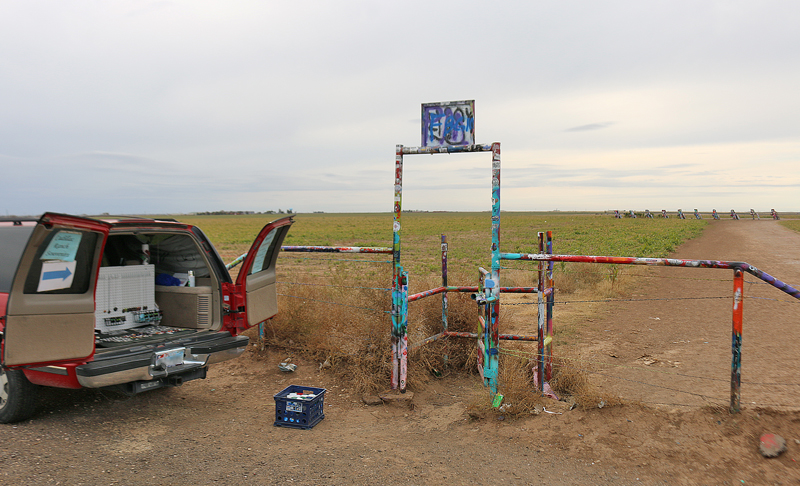
Cadillac Ranch is not initially easy to find — at least, visually — unless you know where it is located. When I arrived, all that was there was an ersatz gate adorned with coats of random colors of spray paint.
An enterprising entrepreneur was selling his wares out of the back of his red sport utility vehicle. Refrigerator magnets. Hat pins. Fidget spinners. Earrings. Paperweights. Necklaces. Plugs. Gauges. Keychains. Cans of spray paint. All merchandise for sale was related to the Cadillac Ranch.

You have to look carefully from the gate and the makeshift fence — comprised of iron or steel and barbed wire — to see the ten specks off in the distance which are the Cadillacs.

I am not sure what was the message of this sign above the gate; but it has long been spray painted over countless times with graffiti.

I walked through the gate and on the rutted yet flat dirt ground towards the Cadillacs on that cold, grey and windy morning. I was the only visitor when I arrived.
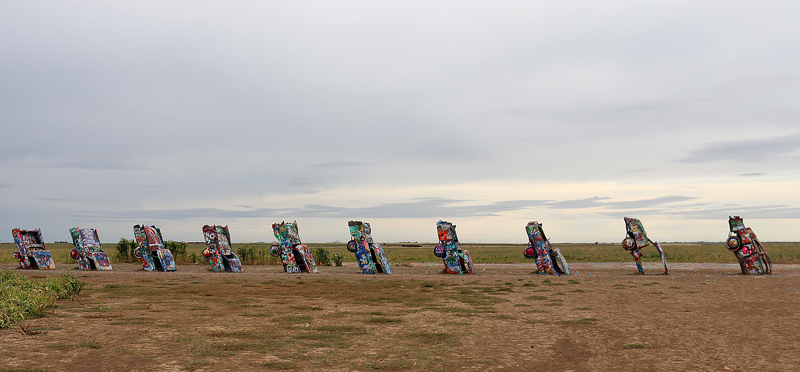
My plan was simple: walk around the cars and take photographs of them from many angles. I started to notice the layers of spray paint, which have been applied to the cars in numerous colors over the years.

Chip Lord, Hudson Marquez and Doug Michels created Cadillac Ranch back in 1974 as art for the public to enjoy, as they were a part of the art group which was known as Ant Farm.

Marquez reportedly had an appreciation for the evolution of the tail fins of different models of Cadillacs — which eventually were phased out with later models — and wanted to represent them in an artistic way.
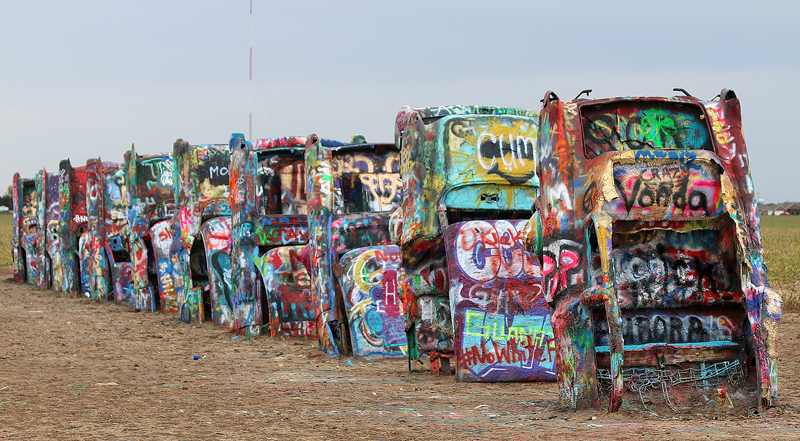
Stanley Marsh 3 — who was known as a billionaire in Amarillo and a silent partner in the project — “wanted a piece of public art that would baffle the locals, and the hippies came up with a tribute to the evolution of the Cadillac tail fin”, according to this article posted at RoadsideAmerica.com. “Ten Caddies were driven into one of Stanley Marsh 3’s fields, then half-buried, nose-down, in the dirt (supposedly at the same angle as the Great Pyramid of Giza). They faced west in a line, from the 1949 Club Sedan to the 1963 Sedan de Ville, their tail fins held high for all to see on the empty Texas panhandle.”

“Built along the tattered remains of historic Route 66, the cars were meant to represent the ‘Golden Age’ of American automobiles”, according to this article written by Kathy Weiser for Legends of America. “Most of the cars were purchased from junk yards, and averaged about $200. The cars were then buried nose-down, facing west along the old highway. Those that could run, were driven into the half-burial holes, the rest were hoisted in.”
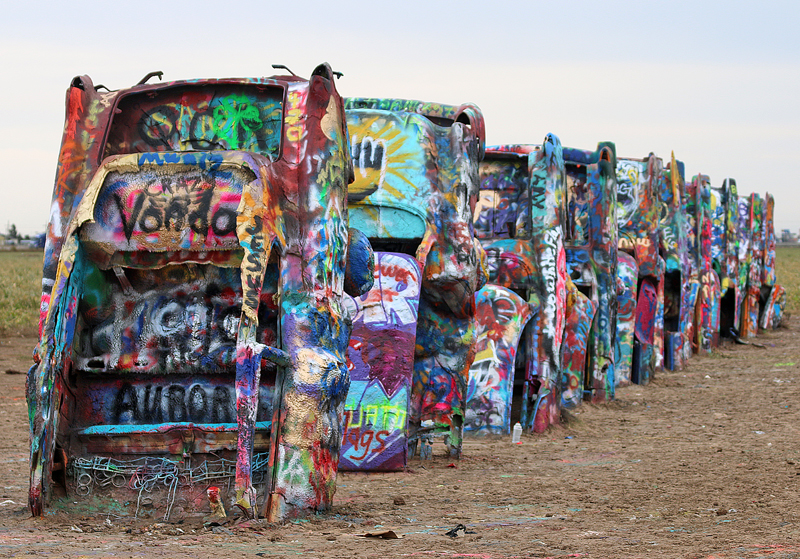
Not long after the exhibit was completed, visitors began to deface the cars by scratching into them, painting over them, and even stealing parts from them — which are the reasons why little else but the colorful carcasses of these once regal vehicles remain.

Interestingly, the cow pasture on which Cadillac Ranch currently occupies — which is privately owned land — is not the original location, as it was moved from a wheat field. According to the aforementioned article by Kathy Weiser, “In 1997, the Cadillac Ranch was exhumed and replanted about two miles to the west, in order to escape the encroaching city of Amarillo. Under Marsh’s orders, even the old site’s trash and clutter was gathered from the old location and spread around the new location. Otherwise the monument remains the same (and, ever changing) since it was erected.”
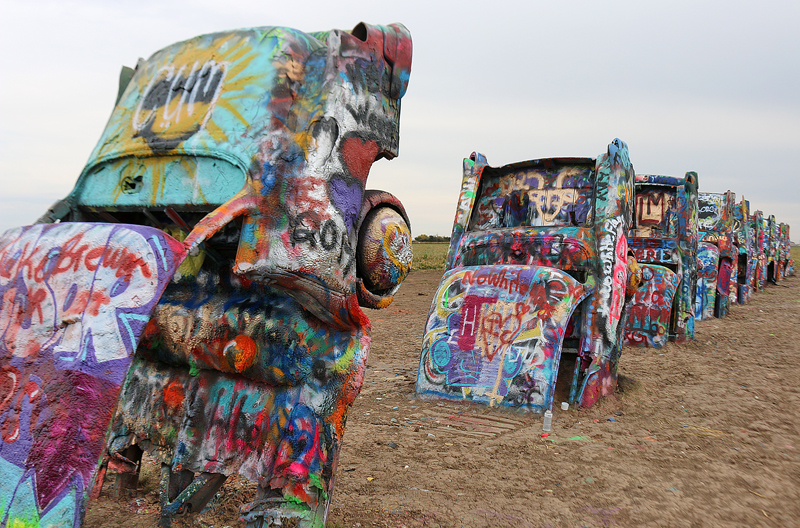
Ever changing is correct: with most new visitors, the appearance of each Cadillac changes yet again, as whatever was previously spray painted on each car is covered over with new coats of different colors of spray paint — usually in the forms of messages or art work.
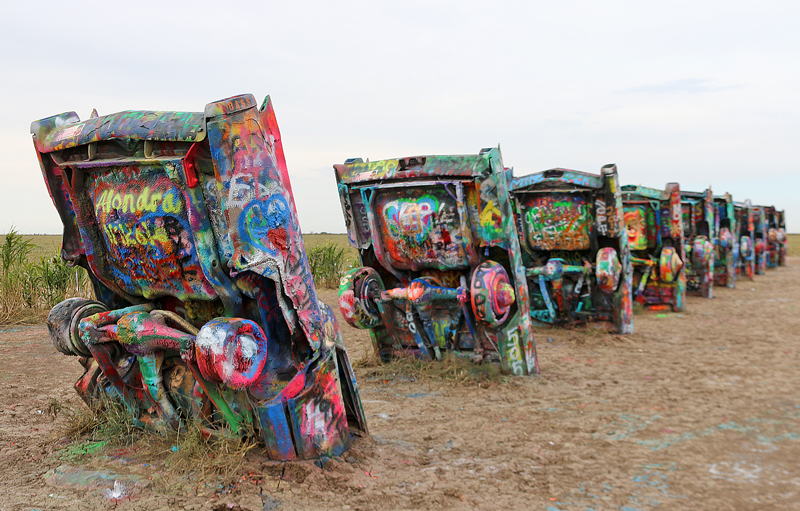
This means that if you go to visit Cadillac Ranch, the appearance of each of these cars will likely have changed from what you see in the photographs included in this article.

The reason is that defacing these cars is not only allowed, but actually encouraged. Stanley Marsh 3 has said that the partners think that Cadillac Ranch “looks better every year.”
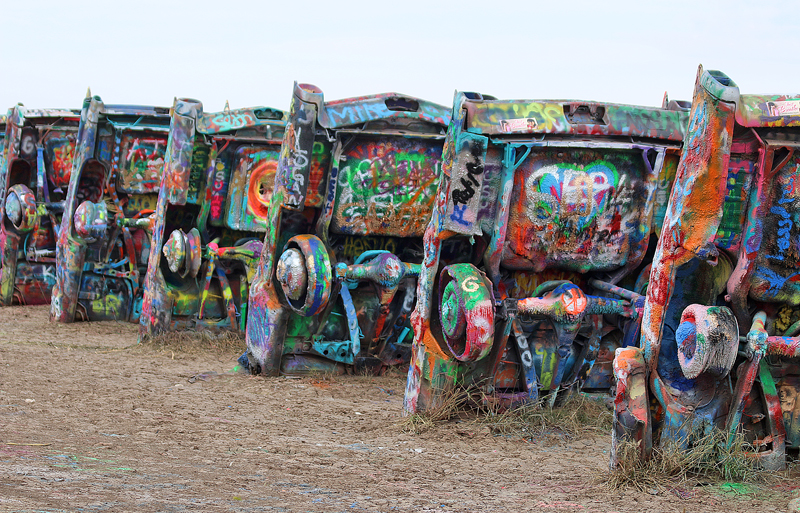
Some 45 years later, each Cadillac has been half-buried in the ground as a display of art — spared of the dreaded junkyard — longer than they were on the road as functional cars.
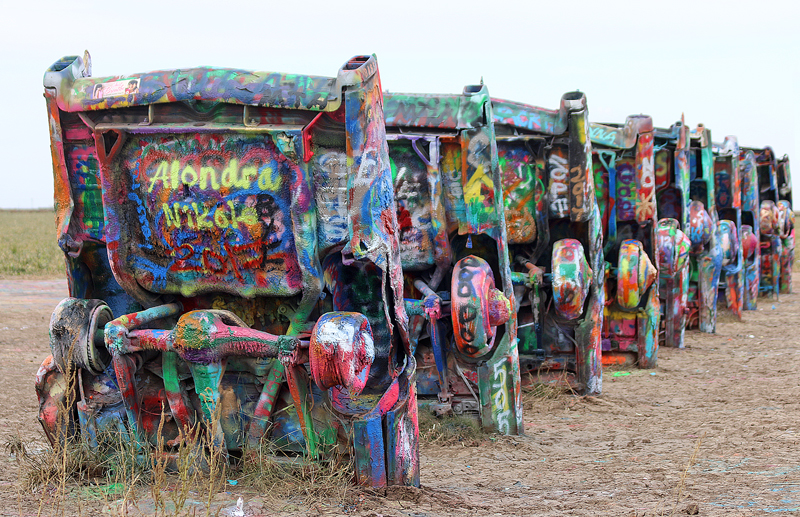
Scraggly weeds somehow manage to grow from the cracked dry Texas dirt and around a few of the vehicles.
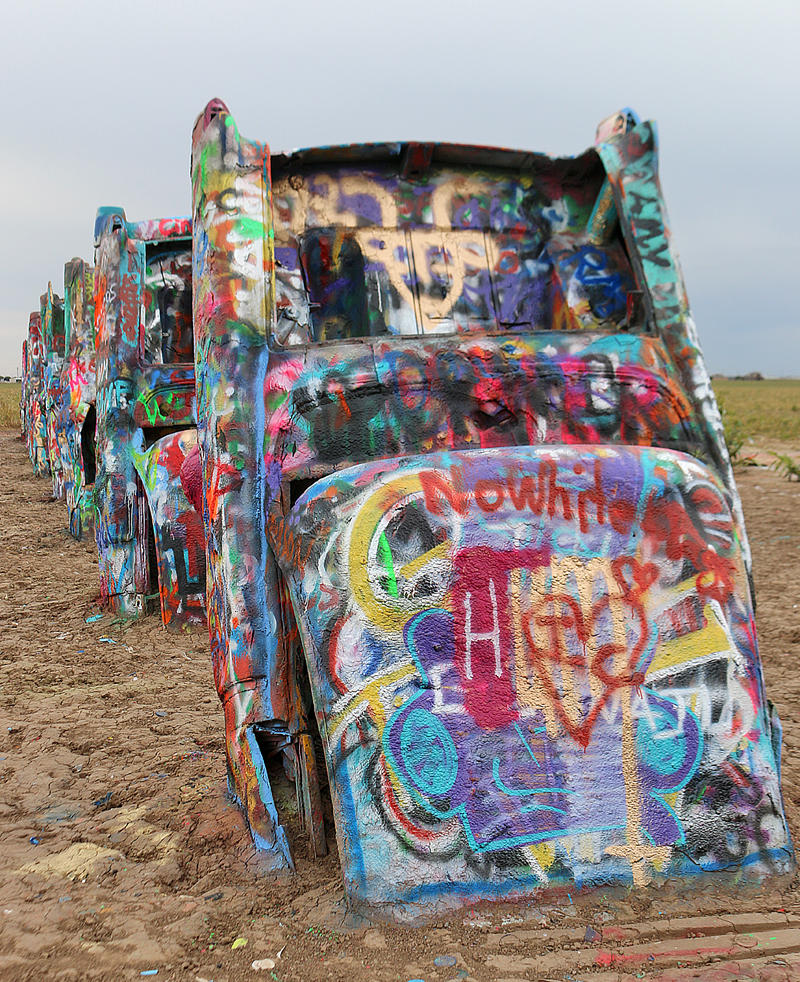
Ironically, the myriad coats of spray paint — as well as several coats of paint over the years periodically applied by the founders of Cadillac Ranch — have likely prevented the cars from rusting away beyond recognition.

For example, all ten Cadillacs were painted white for the filming of a television commercial. Another time, they were painted pink in honor of the birthday of Wendy Marsh, who is the wife of Stanley Marsh 3. To mark the passing of Doug Michels at the age of 59 on Thursday, June 12, 2003, all of the cars were painted flat black. Sometimes the cars were painted over in a flat color simply to provide a fresh canvas for future visitors — but the new color did not remain pristine for long.
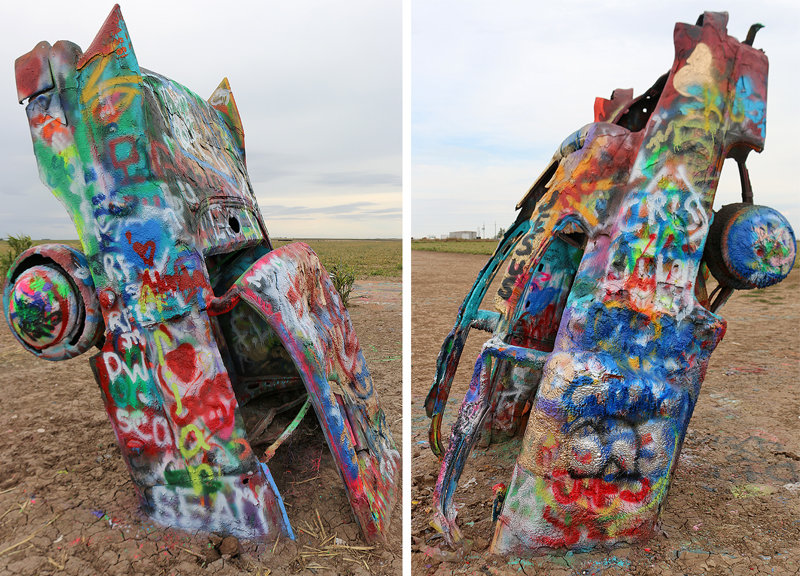
You can compare the aforementioned tail fins — at least, the ones which still exist — on the different models of Cadillacs.
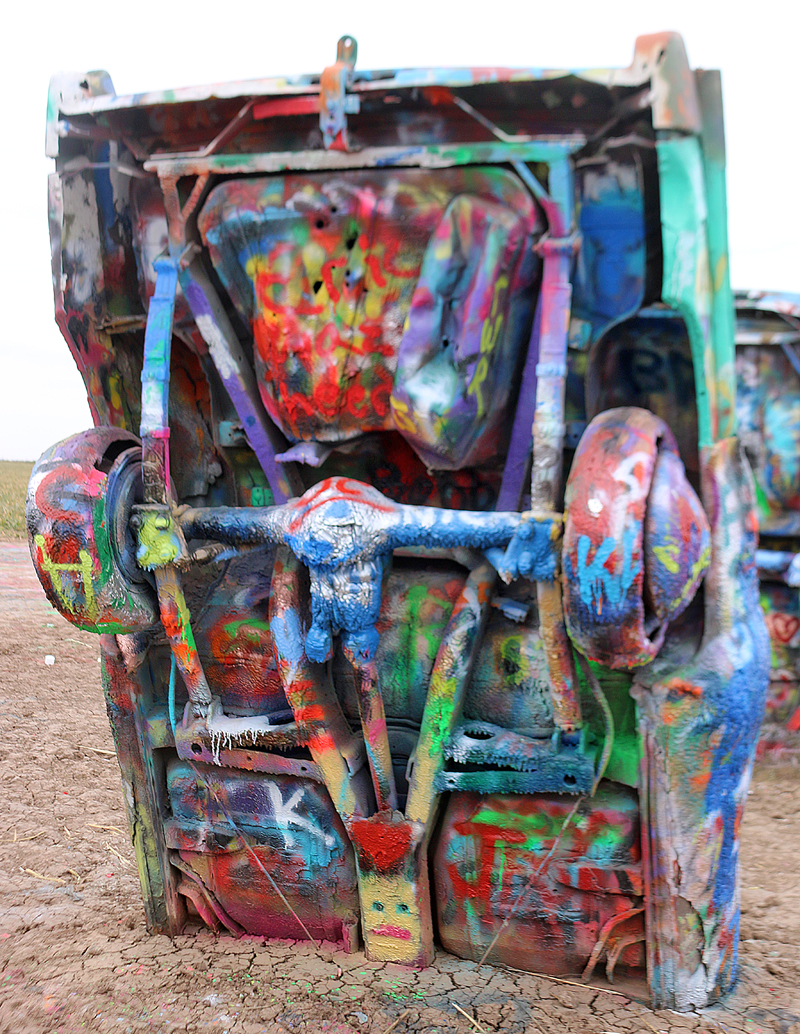
If you decide to leave your mark during your visit, take at least one photograph of your work, as it will likely disappear under yet another coat of spray paint by someone else before long.

This car still has the remnants of tires on its wheels — and no part of any of the cars is safe or left untouched by visitors.
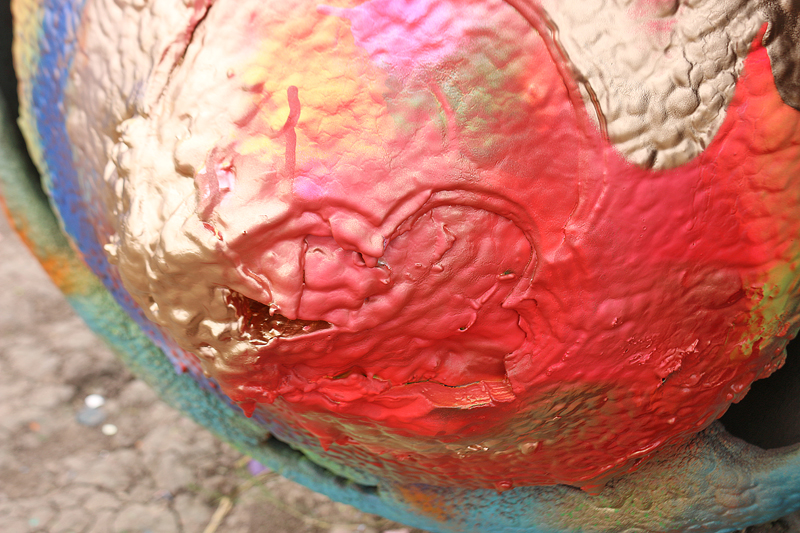
When viewed close up, the melange of colors — combined with the physical layers of years of coats of paint — create a collaborative abstract work of art.

A closer look at each Cadillac shows that they have been stripped to their battered bare frames, “splattered in day-glo paint splooge,” and barely recognizable as automobiles.

Can you tell that this is the hub of a wheel?

So much paint has been applied over the years that you can see the hardened drippings wen viewing them close up.

Can you guess what object is shown in the photograph above?
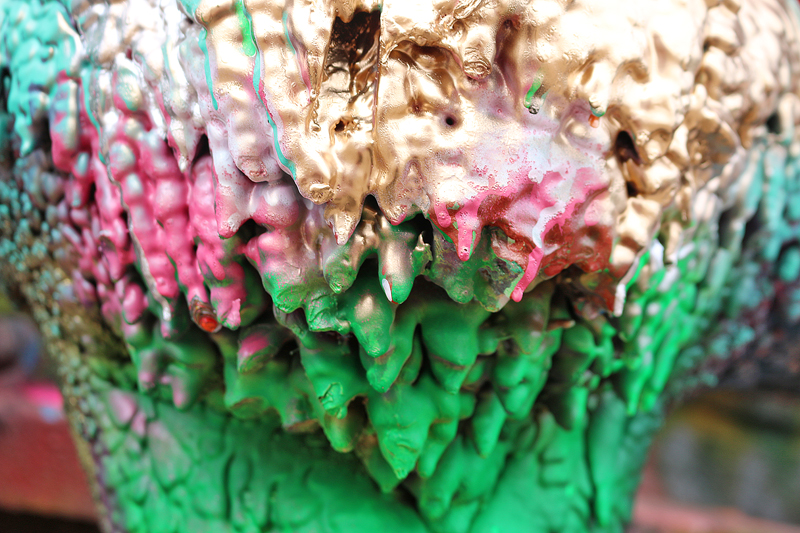
After moving back a bit…

…the object is actually an axle attached to the drivetrain on the underside of one of the cars.
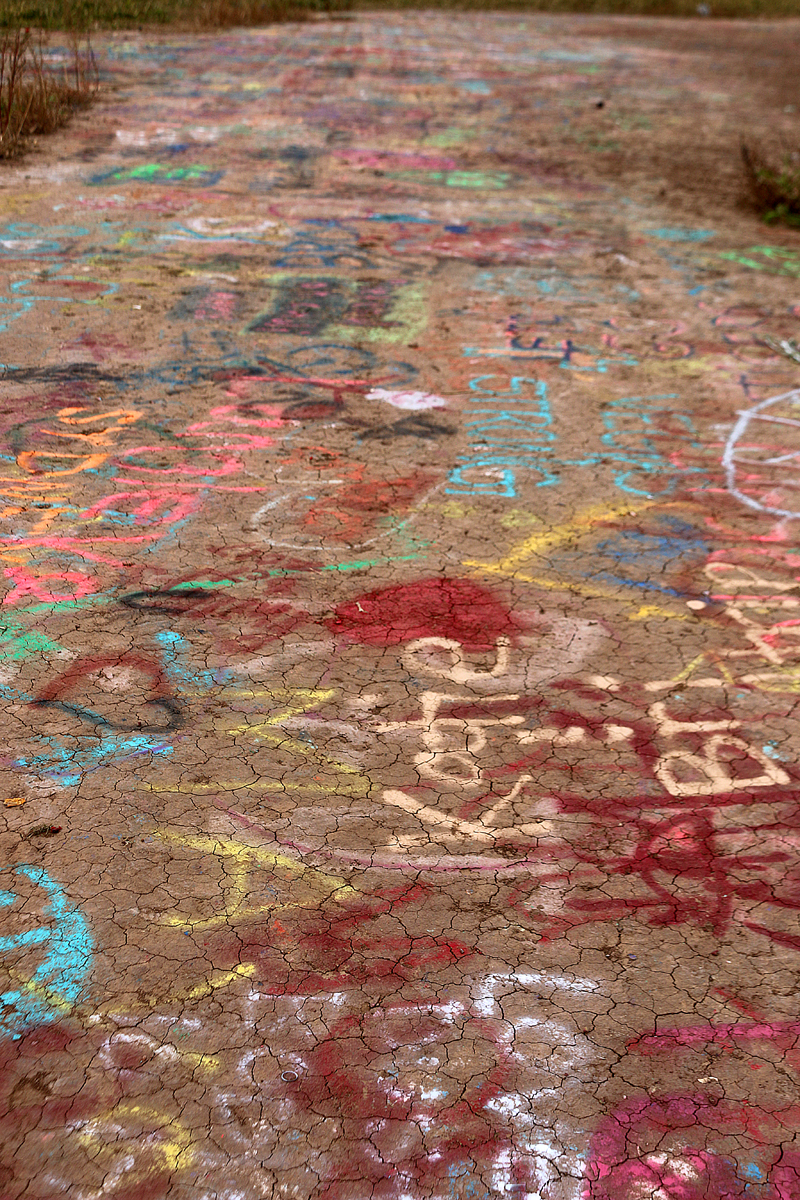
The Cadillacs are not the only objects covered with dried spray paint, as visitors have left their colorful marks on the ground as well.

Strangely enough, Cadillac Ranch may be one of the few landmarks in the world where graffiti, littering, decay and vandalism are not only celebrated as art forms, but also seemingly encouraged.
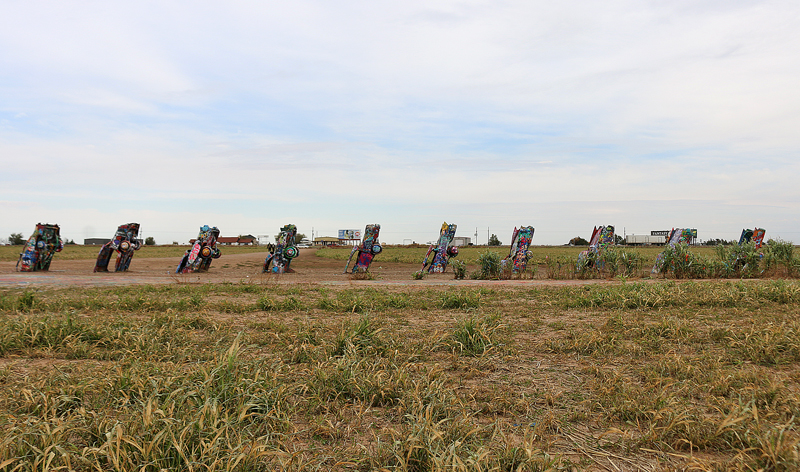
The last two photographs are the Cadillacs as I faced due north, with the gate, fence, and traffic of Interstate 40 in the background.

Summary
Cadillac Ranch is located off of the eastbound frontage road of Interstate 40 eleven miles west of Amarillo between exit 60 and exit 62. The walk from the frontage road to the cars is approximately five minutes on flat unpaved ground.
The Hilton Garden Inn Amarillo — which is only 3.1 miles to the east off of the westbound frontage road of Interstate 40 — is where I stayed for the night. An article of my experience at that hotel property is forthcoming.
There are no facilities and no admission or parking fees to enjoy Cadillac Ranch; so you can stay as long as you like, as it is open daily during daylight hours and has no lights to illuminate the area at night. Give yourself a minimum of 20 minutes to enjoy Cadillac Ranch.
All photographs ©2017 by Brian Cohen.
